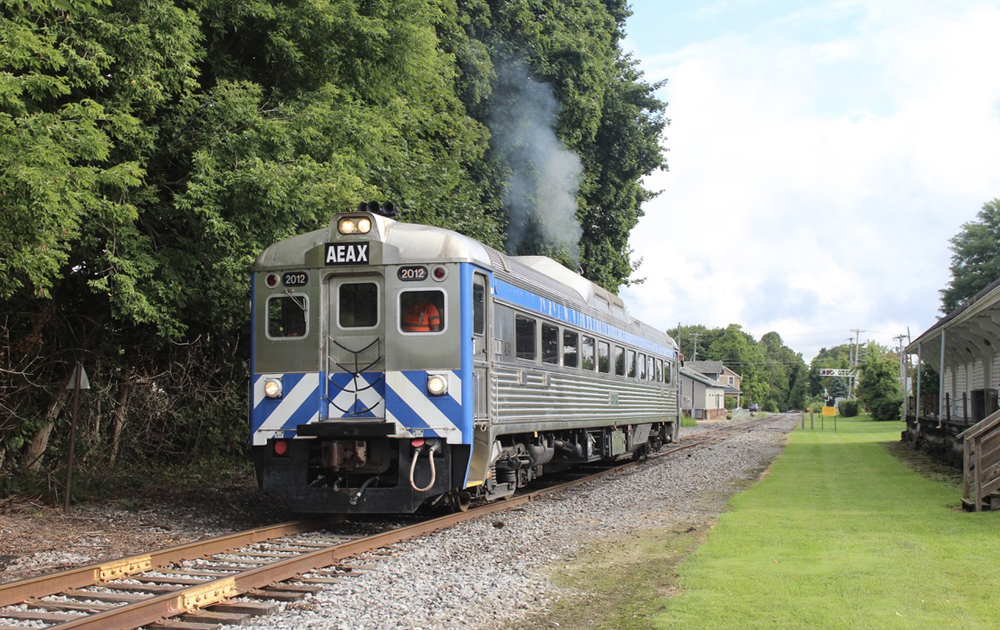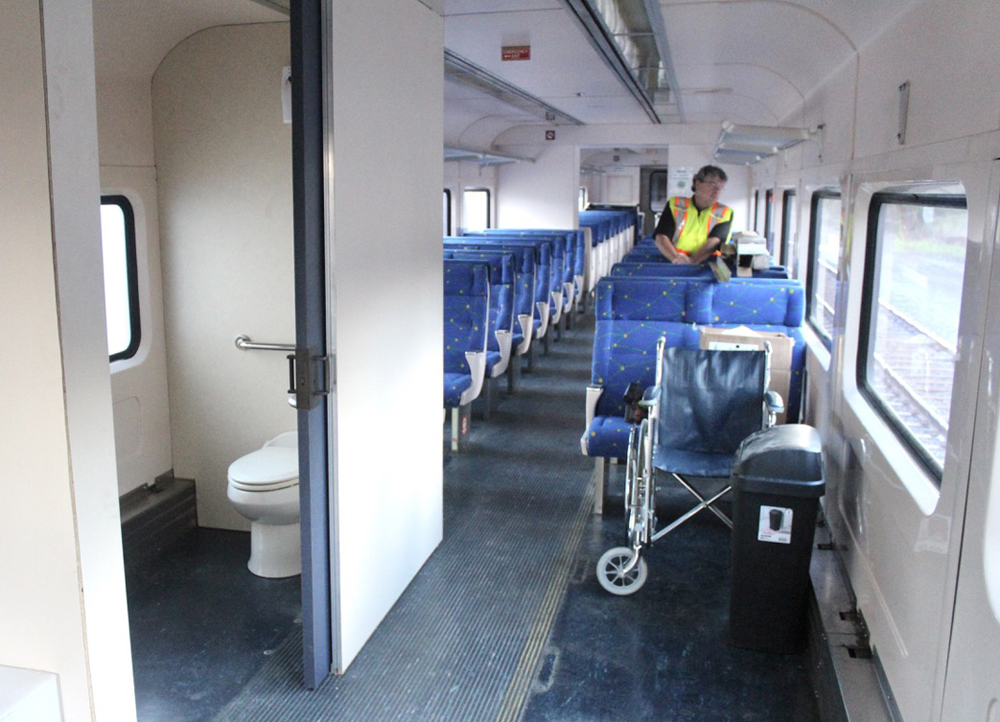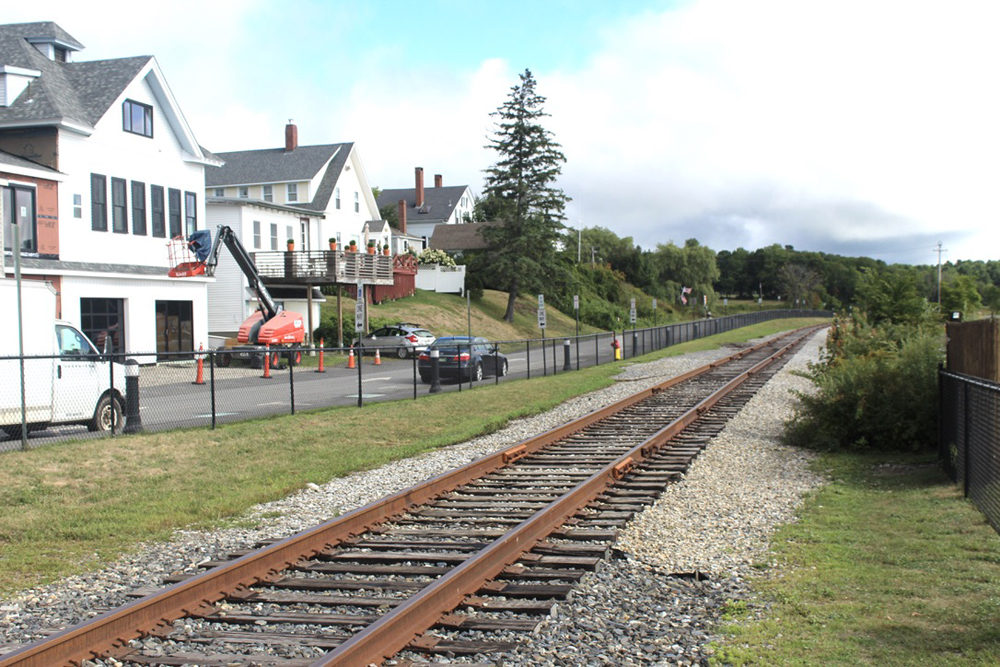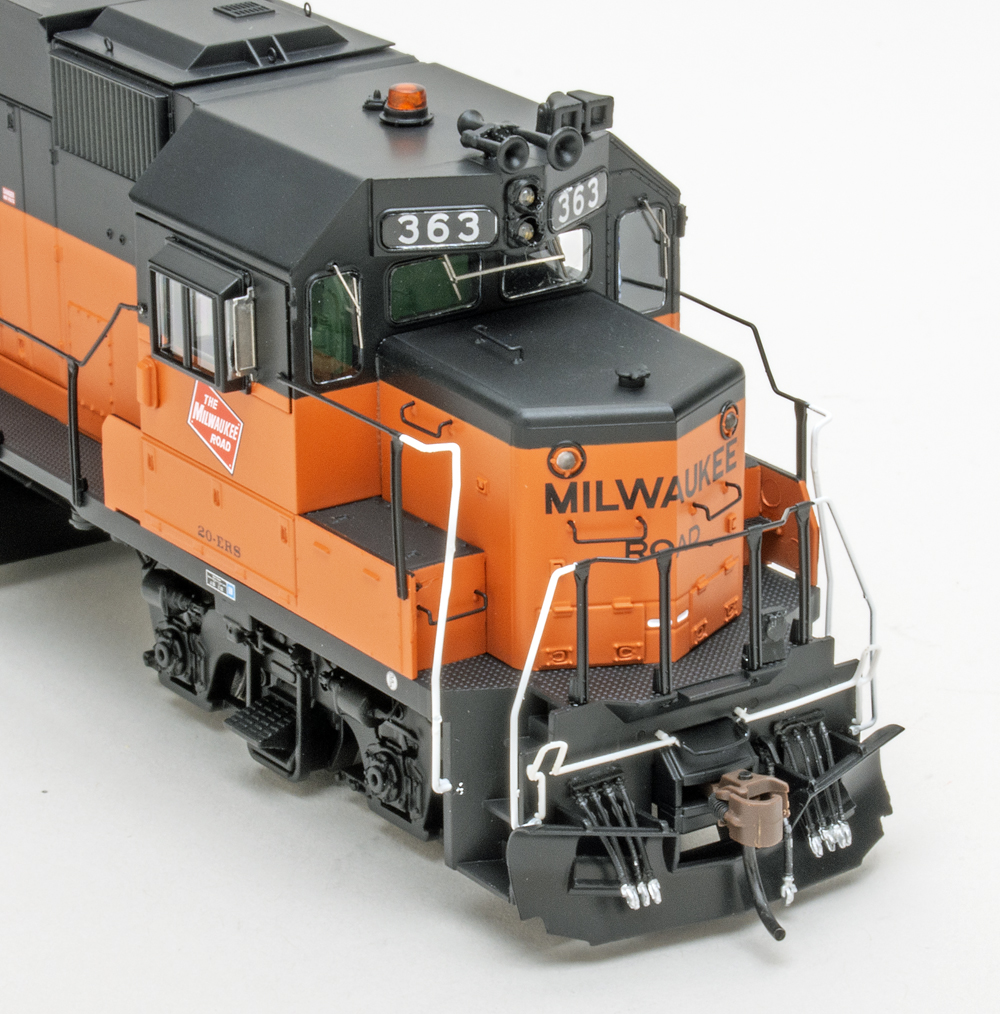
BATH, Maine — The first stage of what Midcoast Railservice President Mike Smith says is a “sequential laboratory experiment” he expects to culminate in scheduled passenger service between Rockland and Brunswick, Maine, is set to begin this weekend at Bath Heritage Days.
On display at Bath, about 9 miles from the Brunswick terminus of Amtrak Downeasters runs from Boston, will be a Budd Rail Diesel Car modified by Midcoast’s parent, Finger Lakes Railway. Visitors will be able to tour the car Friday, June 30, to Monday, July 3, from 10 a.m. to 5 p.m.
The RDC, which Midcoast now brands as a “Coastliner,” recently arrived from Finger Lakes’ Geneva, N.Y., shops, where it was upgraded with an Americans With Disabilities Act-compliant bathroom. Once a second car arrives, train crew qualification runs will begin on the 56-mile Rockland-Brunswick route that Midcoast leases from the state of Maine to operate both freight and passenger service.

Smith tells Trains News Wire that passengers will have their first opportunity to ride the cars on four daily one-hour round trips between Rockland and Thomaston, Maine, in conjunction with the Rockland Lobster Festival Aug. 4-6. Trains will leave from the station used by Maine Eastern excursions until 2015.
The time between this weekend’s display and the August excursions will be used for training and testing, with the eventual goal of establishing scheduled passenger service. Earlier this year, the state’s Department of Transportation approved funding to launch Rockland-Brunswick service [see “Maine DOT proposes $3 million for pilot …,” News Wire, Feb. 3, 2023].
“We don’t want to make any mistakes,” Smith says. “If you are deliberate in your testing and take the time to analyze what you’ve found, you can eliminate a lot of problems down the road. We’ll be testing to see if the Coastliner can maintain the schedule we’ve established and if are there places where we have to be more careful than other locations.”
Smith says the cars have had no problems activating highway crossing warning devices on Finger Lakes excursions out of Geneva, N.Y., “but every railroad is different. Our plan is to be very deliberate on how we test the cars and train the employees.”
Although scheduled service between Rockland and Brunswick is the goal, Midcoast plans to first operate chartered excursions over the route into the fall. Those will run while the company pursues certification of the equipment to comply the Federal Railroad Administration intercity passenger service requirements and coordination discussions take place with Amtrak and the Northern New England Passenger Rail Authority.
“We don’t want to get ahead of ourselves,” Smith says.















I DO hope they succeed!
Glad to see that they want to restore service on this very scenic line. I had the opportunity to ride the final season of Maine Eastern operation and enjoyed it thoroughly. Downtown Rockland is very picturesque and no doubt needs the economic boost that regularly scheduled service would provide. The “station” was merely an open-air low level platform a couple of blocks from the retail and restaurant district, so hopefully a shelter and perhaps shuttle service are part of the plan.
Nice to see this service is starting up. The “let’s just try it!” approach is a refreshing change from “let’s do three or four studies and then try it.” Though I’m sure it won’t be long before people clamor to replace those old and noisy RDC’s with newer battery or hydrogen units, but for now they’ll do the job just fine!
Agree!! Just using RDCs or new DMUs for a 15 month time covers 2 high season ridership’s. Congressional legislation would be needed to exempt ADA and other restrictions. Speed depending on other traffic However, schedule changes easily implemented maybe season adjustments. Then if apparently successful upgrade to regular passenger service.
B&O had a four car RDC train between Pittsburg & Baltimore and BC Rail ran a RDC train between North Vancouver and Prince George, and Western Pacificran a Budd RDC between Salt Lake City & Oakland CA. Are those long enough for this discussion?
Newly formed Midcoast Railservice (“MCRI”) also is conducting a market test of public demand for a passenger transportation alternative in Maine’s coastal US 1 highway corridor. As lessee-operator of the parallel 57-mile state-owned railroad, it plans to initiate a scheduled weekend excursion as the first stage of a sequential experiment to define the extent of the route’s appeal for access between local communities, promotion of seasonal tourism, and availability of connecting interstate service.
Dr. Güntürk Üstün
The Budd Rail Diesel Car, RDC, Budd car or Buddliner is a self-propelled diesel multiple unit (DMU) railcar. Between 1949 and 1962, 398 RDCs were built by the Budd Company of Philadelphia, Pennsylvania, United States. The cars were primarily adopted for passenger service in rural areas with low traffic density or in short-haul commuter service, and were less expensive to operate in this context than a traditional diesel locomotive-drawn train with coaches. The cars could be used singly or coupled together in train sets and controlled from the cab of the front unit. The RDC was one of the few DMU trains to achieve commercial success in North America. Numerous RDCs have been preserved on tourist lines and in museums.
Dr. Güntürk Üstün
Depends on what you define as short haul service. In the 1970s I rode several times between Reading Terminal in Philadelphia to the end of the line in Bethlehem, a distance of 56.6 miles on a SEPTA RDC.